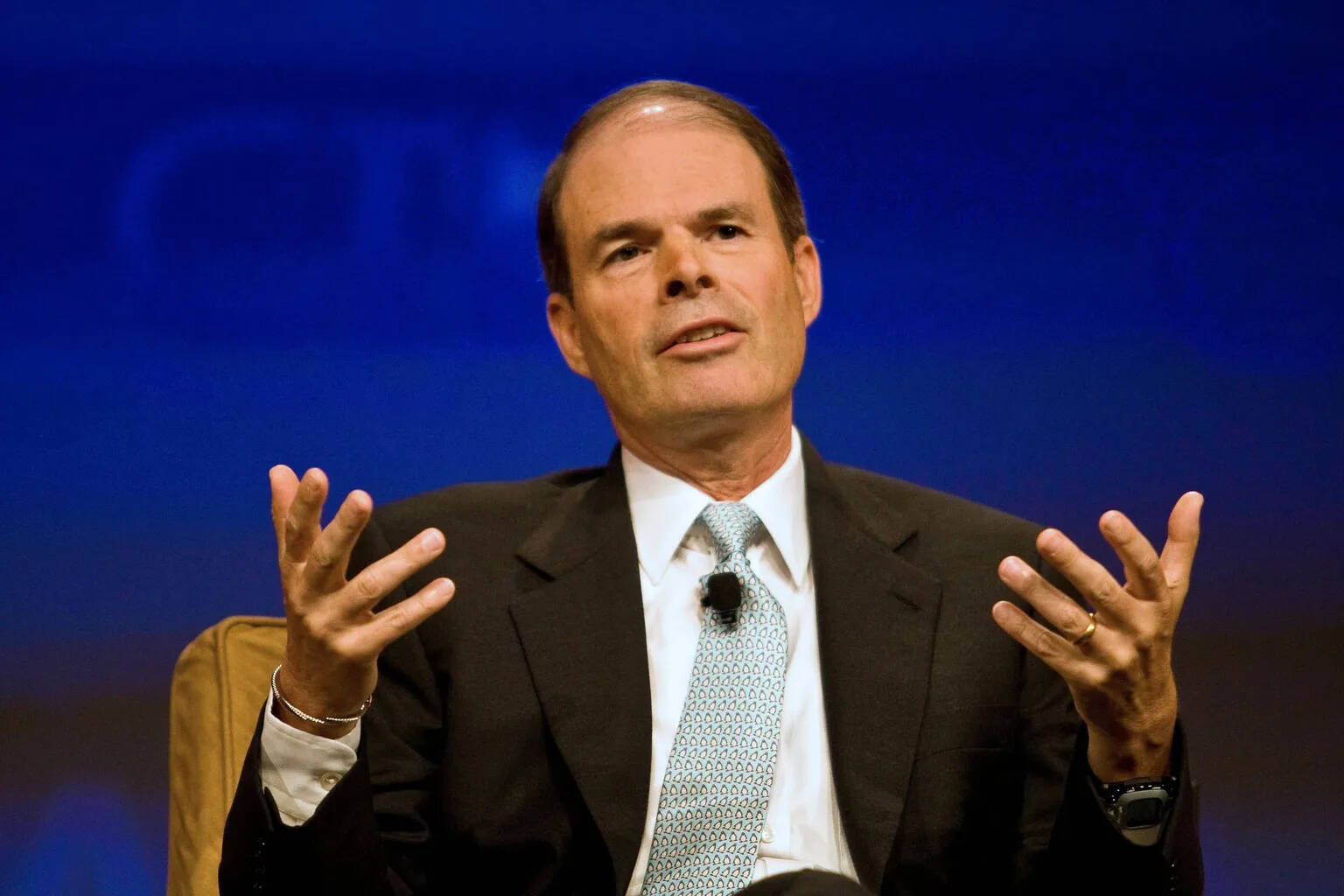Forbes has released their annual list of billionaires for 2025, and 12 of them live here in Washington, including one with roots in Grays Harbor — Craig McCaw.
Aberdeen author Tom Quigg, who created The Harbor — A Culture of Success (online at www.cultureofsucces.com), included a piece on the McCaw family. The following are excerpts from A Culture of Success:
The Grays Harbor connection to the birth of Cable TV
The significant role Grays Harbor County played in the development of large-scale cable television in the United States began in the late 1920’s and early 1930’s.
In an oral history interview for a McCaw family documentary, Bob Uebanks, Ross Wynans and Don McCaw tell a story of J. Elroy McCaw, a Weatherwax High School student, who strikes a deal with Fred Goddard, manager of Aberdeen’s only radio station KXRO, for remote transmission of programs and music to the radio station.
Elroy had created his own private telephone system. He and friends had strung wire from the McCaw home, to the high school, and into downtown Aberdeen. Eventually Elroy piped music to the downtown businesses.
Wires were run down alleys, hanging from buildings and through sewer pipes. He would attach string to ping pong balls and flush them down toilets. When they floated through a man-hole, the string would be grabbed and used to pull a wire through the pipe. The wires were connected, the network system was in place.
The interview went on to say, at the time the cost of telephone service was so high radio stations rarely provided remote broadcasts of sporting events, or other activities. Elroy made an agreement with Goddard to transmit radio programs over his lines at a much lower cost than the telephone company.
However, the system soon came to a sudden end, when the telephone company became annoyed, and had the McCaw system shut down. Thus, began a lifelong animosity McCaw had of the telephone monopoly. However, the relationship between young Elroy McCaw and the businessman Goddard did not end there.
Jump ahead a few years to Astoria, Oregon, in the year 1948. Ed Parson discovered that if he put an antenna on top of the Astor Hotel, he could pick up the broadcast signal from the television transmitters of KING in Seattle. He then ran an antenna wire down to a building across the street. When neighbors heard of it, they wanted to tie into his system, and the first cable TV system in the U. S. was born.
Soon other communities were installing cable systems, and in 1950 two cable TV systems were competing in Aberdeen/Hoquiam. According to Bill McCaw, son of Don McCaw, one was started by a group including Homer Bergren, Fred Goddard, Bob McCaw, J. Elroy McCaw, Don McCaw and other local businessmen. Bill recalls the original headquarters in the garage of their home at 603 North “L” St., Aberdeen. It was a large garage loaded with spools of wire, and everyone worked late into the night to stay ahead of the competition.
The competition was a group headed by John Walker. Eventually the two groups merged, formed Grays Harbor Television, and moved the operation to 218 East Wishkah in downtown Aberdeen. At the time, Fred Goddard managed radio station KXRO, and J. Elroy McCaw had established a few radio stations, and other business ventures. Bob McCaw had a business in Seattle, and Don McCaw was a music director for the Aberdeen School District.
With the Aberdeen system the group developed a business plan, of which some of the founders decided they could replicate in similar communities. They began targeting communities with poor television reception, or existing small cable systems that were struggling. Soon they were partners in systems throughout the Northwest, establishing 50/50 partnerships with local owners, including Astoria. Systems were developed in Washington, Oregon and Northern California.
Oral histories given in 1998, by Charles Clements and Lewis Davenport for the National Cable Television Center and Museum, give credit for the development of cable television in the Northwest to Homer Bergren and Fred Goddard.
Davenport said Goddard would “come into a community and encourage local investors. He looked for owners in the newspaper and radio station businesses, which he felt could get the most out of it (cable). He also looked for a leading attorney, and someone who might be closely tied to the local Chamber of Commerce.”
The locals took 50% of the ownership and the Bergren/Goddard group took the rest. According to Goddard’s son John, for antenna locations they would pinpoint a hilltop site and pay the landowner 2% of the gross system revenue, which eventually became a windfall for the property owner. With this strategy in place, they soon became the largest operator in the Northwest.
Clements recalls that around 1965 the Bergren group put together a company called TeleVue Systems. Most of their community systems became part of TeleVue Systems, a network serving the West Coast. In 1968, TeleVue was sold to CBS; however, in 1970 the Federal Communication Commission forced CBS and NBC to get out of the cable television business. At that point, CBS spun off their cable television division and their program syndication division into a company called VIACOM.
Of those who stayed with VIACOM, one was John Goddard, son of Fred. John’s upbringing in Aberdeen, learning the cable business from summer jobs in construction and installation, served him well. While attending graduate business school at the University of California Berkeley, he and Scot Bergren were granted franchises in Pinole and Crocket, California. John’s father lent him money for his share, and the two friends worked on construction, installation and sales during evenings, weekends and vacation time.
After graduating in 1966, John and Scot managed the franchises, with John responsible for record keeping and Scot took care of marketing.
In 1969 they merged into TeleVue, which soon merged into the Cable Division of CBS. John stayed on in management at TeleVue, the Cable Division of CBS, and Viacom Cable. He ultimately became CEO of Viacom Cable from 1980 to 1996, and has served on the boards of directors of several companies and associations involved in the cable television industry.
An article in Multichannel News describes how John Goddard “shaped the (cable) industry in significant ways.” The writer says how “in January 1953, 11-year old John Goddard walked into the lobby of a downtown Aberdeen hotel (perhaps the Morck) and couldn’t believe what he was seeing: the inauguration of President Eisenhower live on television, right there in his small fishing-and-logging hometown.”
That inspiration is credited as giving him the vision to play a key role in what large scale cable television has become today.
In John’s words, “he was fortunate to have been at the right place at the right time, and grew up being grounded in the basics of the cable industry. And the industry continues to evolve; from basic cable service, to satellite delivered programming, two-way communication, to broadband internet service, and streaming services.” John is concerned that “it’s evolving toward being viewed as a regulated utility, losing sight that it was built and grew with entrepreneurial spirit and private capital.”
By the way, I nearly forgot to mention what became of J. Elroy McCaw. He developed radio station KELA, and his own cable system in Centralia. But he didn’t stop there; he owned two television stations, plus seven radio stations including KPOA in Honolulu, KYA in San Francisco, and WINS in New York City.
McCaw turned WINS into the first rock ‘n’ roll format radio station in the US. According to Clements, “Elroy had considerable interest in improving TV reception in Manhattan Island.”
He formed TeleGuide, Manhattan’s first cable TV system. In addition to cable television, TeleGuide provided closed-circuit service to approximately 64,000 Manhattan hotel rooms. After his death, J. Elroy McCaw’s sons picked up where he left off. You may have heard of them.
Craig, Keith, Bruce and John, and their companies, McCaw Communications (cable), McCaw Cellular, Nextel, Clearwire — but, that’s another story.
Back to John Goddard. He volunteered that after looking at The Harbor – A Culture of Success, he came to a similar conclusion as others on the list.
“Growing up on the Harbor taught me that everyone has different loves, hates and desires. And most importantly, taught me to get along with others, without regard to social status. The youth in most areas of the county lose the opportunity to get along with, and cooperate with others, to accomplish mutual goals.”
So, the vision of large-scale cable networks may have begun when J. Elroy McCaw, a young Weatherwax High School student, created a “homemade” music and sports network system throughout the business district of Aberdeen, which Fred Goddard used for his radio programming.
That relationship brought television to the small community of Aberdeen/Hoquiam. And their visionary thinking, inherent in many Harborites, allowed them to take that business plan and apply it throughout the West, and beyond.
The influence of the McCaw and Goddard families in the development of large scale cable TV systems, and other national media, is no small matter.
The list
Leaders from big companies in the state like Amazon, Microsoft, Starbucks and video game giants made up most of the Forbes list.
Many are from Eastside, where cities like Medina rank the most expensive places to live in the United States outside of California.
Here are all the Washington billionaires as listed in Forbes this year:
Steve Ballmer, $118 billion
Former CEO of Microsoft.
Led the company from 2000 to 2014, and is now owner of the Los Angeles Clippers NBA team; founder of USAFacts; and co-founder of Ballmer Group
Bill Gates, $108 billion
Microsoft co-founder.
Chair of the Gates Foundation and founder of Breakthrough Energy.
Melinda French Gates, $30.4 billion
Pivotal Ventures founder.
Left her position as co-chair of the Bill and Melinda Gates Foundation after a nearly 24-year run.
MacKenzie Scott, $28.2, billion
Previously married to Amazon founder Jeff Bezos for 25 years. Jeff Bezos left Washington for Miami in 2023.
Known now for her roles in philanthropy and publishing.
Gabe Newell, $9.5 billion
Valve Corp. President.
Video game developer who co-founded the company in 1998 with former Microsoft colleague Mike Harrington.
Charles Simonyi, $7.2 billion
Early Microsoft employee.
Behind some of the company’s most successful software, including Word and Excel.
Howard Schultz, $3.5 billion
Former Starbucks CEO.
Known for turning what was a regional coffee company into one of the world’s top brands.
John Stanton, $2.4 billion
Chairman of the Seattle Mariners baseball team.
Now serves as managing partner of a group of investors that has owned the franchise since 2016.
Craig McCaw, $2 billion
Wireless pioneer.
Took over his dad’s cable-TV business in 1966 with his brothers.
Rich Barton, $1.2 billion
• Co-founder and CEO of Seattle real estate company Zillow Group.
• Also co-founded travel giant Expedia.
Orion Hindawi, $1.1 billion
Tanium co-founder.
Started the cybersecurity firm with his father in 2007 before they moved from San Francisco to Seattle in 2020.
David Hindawi, $1 billion
Tanium co-founder, father to Orion Hindawi.



